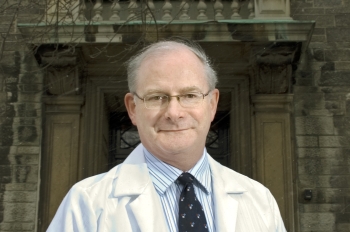New Partnership Addresses Gap in Health Care System
University of Toronto is partnering with three other leading health care and research institutions to address a major gap in our health care system: the care of those suffering from simultaneous mental and physical illness.
The creation of the Medical Psychiatry Alliance was announced at the Centre for Addiction and Mental Health (CAMH) on January 28, 2014. In attendance were representatives from the four founding partner institutions: University of Toronto, CAMH, the Hospital for Sick Children and Trillium Health Partners.
Ontario Minister of Health and Long-Term Care Deb Matthews was also on hand to announce the province’s $20 million grant to the Alliance, matching a landmark $20 million gift from an anonymous donor. Each of the four partners has also committed to raising additional funds and providing critical resources to make the $60 million initiative a reality.
"The University of Toronto has a long and proud history of leadership and innovation in the education of mental health professionals, and of collaborative leadership in mental health care, all informed by groundbreaking research in the field,” said U of T President Meric Gertler. “We are delighted to be a founding partner in this initiative to improve dramatically the quality of health care for the most vulnerable in our society, and for all Ontarians.”
More than 1.3 million Ontarians currently suffer from combined physical and mental illness. Studies of health systems around the world as well as first-hand experiences from those on the frontlines of care have shown that patients with these co-morbidities are often ill-served with potentially severe consequences. The challenge stems from the fact that our health care system is designed to focus on either physical or mental illness, but not both at the same time.
An additional consequence of the lack of coordination between physical and mental health care is sharply elevated costs to the system for these types of patients. This occurs because health care providers, in the absence of a comprehensive diagnosis, may over-investigate the physical symptoms, resulting in unnecessary diagnostic testing and recurrent use of family doctors and emergency department resources.
"Mental illness is often hidden within the symptoms of physical disorders, with treatment focusing on physical illness while the mental illness remains undiagnosed and untreated, said Ontario Minister for Health and Long-Term Care Deb Matthews. “That’s why this initiative and Bell Let’s Talk Day are so important – intervening early and getting patients the treatment they need will help people living with these illnesses recover better and live healthy lives.”
The Medical Psychiatry Alliance will develop a new integrated model of care to address combined mental and physical illness, based upon research and novel integrated approaches to the education of health care professionals. In these efforts, it builds upon the distinct strengths and patient populations of the four partners and their wider networks.
“The Toronto region is one of the few places in the world with the capacity to launch such a comprehensive effort,” said U of T Faculty of Medicine Dean Catharine Whiteside. “This is enabled by our critical mass of collaborative clinical and health sciences resources, and effective community engagement.”
Trevor Young, chair of U of T’s Department of Psychiatry, hailed the creation of the Medical Psychiatry Alliance as a major step forward in the health and welfare of Ontarians.
“We are confident that this is one of the most clear and direct opportunities to improve health care in Ontario,” he said.
In his remarks, Gertler also thanked the private donor, who has chosen to remain anonymous: “While the countless individuals who will benefit from your generosity will not know you by name, you will have been a crucial source of healing in their lives. For that we are all deeply grateful.”
Photo courtesy of iStock.

Optimize this page for search engines by customizing the Meta Title and Meta Description fields.
Use the Google Search Result Preview Tool to test different content ideas.
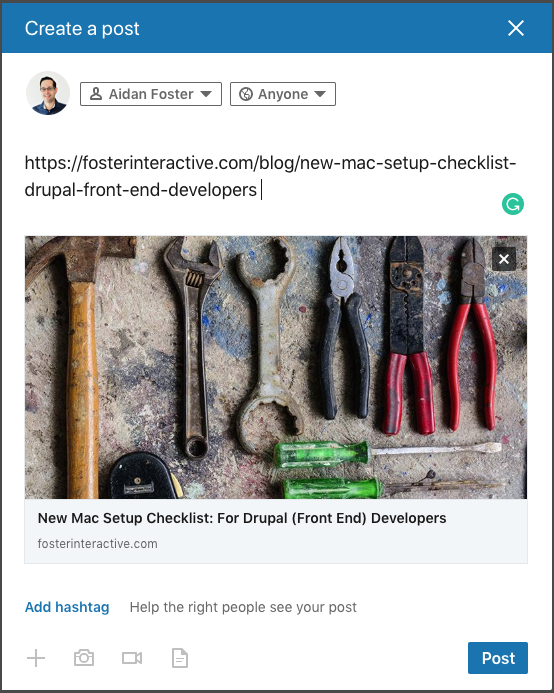
Select a Meta Image to tell a social media platform what image to use when sharing.
If blank, different social platforms like LinkedIn will randomly select an image on the page to appear on shared posts.
Posts with images generally perform better on social media so it is worth selecting an engaging image.
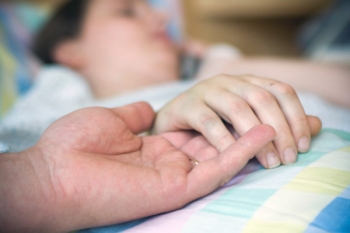
U of T’s Organ Donation Drive Bests Record Goal
The University of Toronto’s Gift of Life campaign has exceeded its goal of 4,000 participants, making it the largest institutional organ donor registration campaign in Ontario’s history. The University launched the campaign with the Trillium Gift of Life Network to increase rates of registered organ and tissue donors in the Greater Toronto Area.
Only 15 per cent of Torontonians are registered organ and tissue donors, compared to 24 per cent across Ontario.
The drive to register faculty, staff and students ran from January 13th to 24th, but those interested can still register at http://www.beadonor.ca/uoft. More than 4,600 people have registered or checked their status.
“We are very happy with the response from the University community,” said Kim Blakely, a second-year medical student and President of the U of T Medical Society who has helped coordinate registration efforts. “This campaign is helping to dispel misconceptions about organ donation and inform people about the importance of registering online. It has been truly amazing to see students and dedicated volunteers across our U of T campuses coming together as a community to support this important cause.”
Members of the Medical Society, the Interprofessional Healthcare Students’ Association and other University student groups ran donor registration booths on the three campuses every day of the campaign, alongside Trillium volunteers. People stopped by the booths to get information about organ donation, ask questions, and register their consent to donate or check their registration status.
Student campaign organizers have worked with staff and faculty to reach all University students by email, and also made a strong push through social media. Several hundred people joined or are following the campaign’s Facebook and Twitter accounts, and the campaign’s “Dear Donor” video has received over 4,000 views.
The video features U of T students and other young people who have received or are waiting for an organ or tissue donation, and family members of those who have donated their organs or passed away while waiting for a transplant.
First-year medical student Vanessa Zannella helped create the video. “It was incredibly inspiring to meet transplant recipients and their families,” said Zannella. “But at the same time, it was very hard to hear the stories of those stuck on a wait list. I hope our video has helped spread the word that young people often require life-saving organ transplants, and that people of all ages can and should register to be organ donors.”
In Ontario today, there are more than 1,400 people waiting for an organ transplant.
Ronnie Gavsie, President and CEO of the Trillium Gift of Life Network, welcomed the effort of the U of T community. “The enthusiasm and support shown for organ and tissue donation is incredible,” said Gavsie. “U of T’s campaign is reaching new audiences, raising awareness about the importance of organ and tissue donation, and encouraging more people to register their consent to donation — in doing so, it is saving lives.”

Optimize this page for search engines by customizing the Meta Title and Meta Description fields.
Use the Google Search Result Preview Tool to test different content ideas.

Select a Meta Image to tell a social media platform what image to use when sharing.
If blank, different social platforms like LinkedIn will randomly select an image on the page to appear on shared posts.
Posts with images generally perform better on social media so it is worth selecting an engaging image.
Understanding Organ Donation: Q&A with Dr. Atul Humar
Every three days in Ontario, someone dies waiting for an organ transplant. Transplant medicine has grown by leaps and bounds in the last decade, but the supply of organs and tissue has not kept pace with demand. Toronto, in particular, has some of the lowest donor registration rates in Canada.
On January 13, 2014, the University of Toronto launched a campaign to encourage faculty, staff and students to register as organ and tissue donors. Those interested can check their status or register at https://beadonor.ca/uoft. The process only takes two minutes with a valid Ontario health card or photo identification.
Dr. Atul Humar is a Professor in the Department of Medicine and the new Medical Director of the Multi-Organ Transplant Program at University Health Network. He is also the new Director of the University of Toronto Transplantation Institute. He recently spoke with Faculty of Medicine writer Jim Oldfield about the importance of organ and tissue donation, transplant medicine, and why he returned to Toronto from the University of Alberta.
What should people know about organ and tissue donation?
Many people don’t realize that one person can save up to eight lives through organ donation, and save or improve quality of life for up to 75 others through tissue donation. Moreover, organ and tissue donation save lives in a transformational way — patients often go from one extreme of health to the other. Many patients will tell you that receiving an organ was the defining moment of their lives.
How can we improve donor registration rates in Ontario?
Donor registration rates in Ontario are comparable to, or better than other provinces, but in the Greater Toronto Area, we have an opportunity to do much better. A large majority of Ontarians support organ and tissue donation, but less than 25 per cent have registered as donors. Many people believe they are registered because they signed a paper donor card, but the province doesn’t track signed cards and next-of-kin consent is often lost when family members don’t know the wishes of their loved ones. So raising awareness about registration is critical to improving organ and tissue donation rates.
You began your career at U of T, but spent the last six years in Alberta. What drew you back to Toronto?
U of T and its affiliated hospitals have an outstanding transplant program, and there is huge potential for this program to become the very best in the world. My predecessor Dr. Gary Levy, with strong institutional support, gathered a critical mass of talented people in clinical care, research and education. With a better supply of donor organs and tissue, we could save many more lives, and some of the research underway here is changing the field.
What does the future hold for transplant medicine?
Advances in regenerative medicine and related technologies will allow us to repair damaged organs, and ultimately to grow and transplant cells. This could help reduce the need for donor organs and tissue. And methods aimed at re-educating the immune system will limit rejection of transplanted organs and tissue, and reduce or eliminate the need for immunosuppressive medications, which have serious side effects. These new techniques will make a big difference in the lives of many.

Optimize this page for search engines by customizing the Meta Title and Meta Description fields.
Use the Google Search Result Preview Tool to test different content ideas.

Select a Meta Image to tell a social media platform what image to use when sharing.
If blank, different social platforms like LinkedIn will randomly select an image on the page to appear on shared posts.
Posts with images generally perform better on social media so it is worth selecting an engaging image.
Discovery of Genetic Markers Leads to Personalized Treatment of Patients with Autoimmune Diseases
A Faculty of Medicine researcher has discovered genetic markers that could change the way physicians diagnose autoimmune diseases, leading to more targeted and personalized care.Professor Katherine Siminovitch (Department of Medicine) and a team of international scientists uncovered 40 new genetic markers for rheumatoid arthritis, an inflammatory disease that affects one per cent of the world’s population.
The team also discovered an overlap between the genetic markets for rheumatoid arthritis and markers for other autoimmune diseases such as Type 1 Diabetes, Lupus and certain cancersScientists have only begun to uncover the causes of autoimmune diseases such as rheumatoid arthritis, but understand that both genetic factors and environmental triggers play a role. The causes of autoimmune diseases such as rheumatoid arthritis have previously been unknown, but both genetic factors and environmental triggers play a role. The triggers are hard to pinpoint because they may occur years before the patient shows symptoms. The key, according to Siminovitch, is to find the genetic pathways that predispose to these diseases in order to understand why certain people are susceptible, what outcome each affected person will experience, and how each patient will respond to specific medications.
“We can now determine the genetic pathways that lead to rheumatoid arthritis in individual patients. We hope to use this information in the clinic by selecting each patient’s treatment based on cause rather than by trial-and-error,” says Siminovitch, who is Director of the Office of Personalized Genomics and Innovative Medicine at Mount Sinai Hospital. Genetic information may also soon allow physicians to proactively identify and treat those who are at a high risk for rheumatoid arthritis.
“New genetic information has revealed many overlaps in the cell pathways leading to one autoimmune disease versus another. Because many of the drugs we use to treat autoimmune diseases target specific pathways, these overlaps imply that a treatment working in one autoimmune disease may also be valuable in treating another. For example, a drug used to treat rheumatoid arthritis may be effective in treating patients with inflammatory bowel disease if these diseases are caused by similar pathways. It’s a whole new ball game in terms of diagnosing and treating patients,” says Siminovitch.
There is currently no cure for rheumatoid arthritis, and at least half of all patients do not fully respond to the available treatments. The progression of the disease varies from case to case, but almost 50 per cent of all adults with the autoimmune disease are unable to work full time within 10 years of diagnosis.
Siminovitch’s work offers hope to patients world-wide. “In the next 10 years I would like to see remarkable new gains in genetic knowledge translate into ability to reduce risk for rheumatoid arthritis and other autoimmune diseases or at least to minimize progression of such diseases and achieve better outcomes.”

Optimize this page for search engines by customizing the Meta Title and Meta Description fields.
Use the Google Search Result Preview Tool to test different content ideas.

Select a Meta Image to tell a social media platform what image to use when sharing.
If blank, different social platforms like LinkedIn will randomly select an image on the page to appear on shared posts.
Posts with images generally perform better on social media so it is worth selecting an engaging image.
Repatriating Undergraduate Medical Education Accreditation
In December, a major step forward was taken for medical education in our country. Canadian medical schools have achieved greater autonomy over our educational standards and accreditation procedures, while at the same time continuing the close relationship with our American colleagues. This will ensure medical school graduates meet their respective countries' standards and are prepared for medical training on either side of the Canadian-American border.
This is the result of a landmark agreement signed between the Association of American Medical Colleges, the American Medical Association, the Canadian Medical Association and the Association of Faculties of Medicine of Canada on December 12, 2013. This is a positive development and I encourage you to read this article from the January 6th issue of CMAJ that outlines this new approach.
Under this new framework, which will take effect June 2014, the American and Canadian accreditation policies and processes will be modified to reflect six principles of accreditation, with a process for regularly reviewing these principles. It will also allow for greater flexibility in addressing some needs unique to Canadian medical education — such as integrating social accountability as criteria — while maintaining high standards. In particular, it will allow Canadian medical schools to move forward with many of the recommendations of the Future of Medical Education in Canada (FMEC) project, which will ensure our medical education system continues to meet the current and future needs of Canadians.
To arrive at this moment, leadership was shown from many quarters of Canada’s medical education community, which has worked thoughtfully and collaboratively with American colleagues. However, I do feel U of T Medicine can take special pride. This Faculty has been a vocal proponent for these changes. In particular, I want to acknowledge the work of Jay Rosenfield, our Vice Dean of Undergraduate Medical Professions Education. As co-author of the landmark FMEC-MD report, and now as national co-chair responsible for revising transitions across the continuum of medical education, he has been a strong advocate for innovation and the embodiment of our Faculty’s commitment to medical education excellence.
We now turn our attention to the task of implementing FMEC’s recommendations. It will require us to carefully reconceive undergraduate and postgraduate medical education at U of T. With your support, we will continue to demonstrate international leadership through innovative curriculum and teaching models.
Catharine Whiteside
Dean, Faculty of Medicine, and Vice Provost, Relations with Health Care Institutions

Optimize this page for search engines by customizing the Meta Title and Meta Description fields.
Use the Google Search Result Preview Tool to test different content ideas.

Select a Meta Image to tell a social media platform what image to use when sharing.
If blank, different social platforms like LinkedIn will randomly select an image on the page to appear on shared posts.
Posts with images generally perform better on social media so it is worth selecting an engaging image.
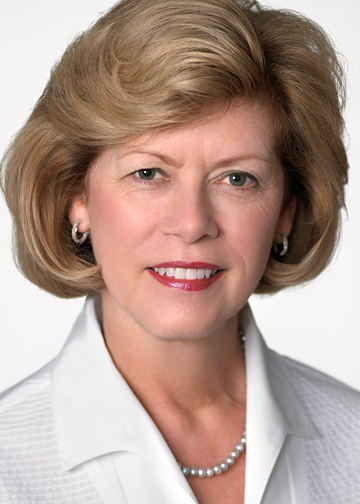
Medical Student Research Day
Undergraduate Medical Education hosted the 28th annual Medical Student Research Day on Tuesday, January 28th. The event showcased 170 posters across nine research categories.
The following students were selected for an oral presentation by a group of their peers in the MD and MD/PhD programs, on the basis of their abstracts:
- Basic Science: James Wang
- Clinical: Melissa Yu
- CREMS Scholar & First Year: Hala Muaddi & Vanessa Zannella
- Health Care: Hart Goldhar
- MD/PhD: Jared Wilcox
The following students won awards for best poster presentation:
- Basic Science: Kevin Kirouac
- Clinical: Chenhan Wang
- CREMS Scholar 2012: James England
- CREMS Scholar 2013: Sidharth Saini
- Health Care: Michelle Yee
- International Health: Jessica Harper & Jennifer Hunter
- Determinants of Community Health: Janet Nguyen
- First Year: Laureen Hachem
- MD/PhD: Brian Ballios

Optimize this page for search engines by customizing the Meta Title and Meta Description fields.
Use the Google Search Result Preview Tool to test different content ideas.

Select a Meta Image to tell a social media platform what image to use when sharing.
If blank, different social platforms like LinkedIn will randomly select an image on the page to appear on shared posts.
Posts with images generally perform better on social media so it is worth selecting an engaging image.
Office of Indigenous Medical Education Officially Opens
The Faculty of Medicine celebrated the establishment of the Office of Indigenous Medical Education with a reception and open house on February 3. The office was founded to attract and support Indigenous medical students, build partnerships and advance the understanding of Aboriginal health issues within the Faculty’s curricula.
For second-year undergraduate medical student Marc Labelle, the office is not just a place for Indigenous students to come together. It is also a valuable source of support for continuing the many initiatives he and the Faculty’s other Indigenous students are involved with—including helping Aboriginal applicants, community outreach and engagement and organizing an Aboriginal health elective.
“There are so few of us, once we hit exams, all of our initiatives stop. It just helps from a critical-mass standpoint because we just don’t have the numbers to do everything we would like to do,” Labelle said.
That’s something the office is working to change.
“I hope to have many more Aboriginal students here, and also Aboriginal residents and faculty members,” said Dr. Lisa Richardson, one of the office’s two curricular co-leads.
Another goal is to help non-Indigenous students better understand how to deliver culturally safe care.
“We don’t have very many Aboriginal students in the program – we’re at six now, but we have many students who could one day be working with Aboriginal patients,” she said. “The idea is that, through this office, we’ll be teaching them, guiding them and helping to give them some skills and knowledge to work with Aboriginal patients.”
According to Cat Criger, an Elder whose role is to provide cultural support and teachings, students—both Indigenous and non-Indigenous—have been visiting the office to learn more about Aboriginal health issues.
“Knowledge is a wonderful thing,” he said. “When people have knowledge about us, it’s a much more welcoming place, both for our people, and for the people working with us.”

Optimize this page for search engines by customizing the Meta Title and Meta Description fields.
Use the Google Search Result Preview Tool to test different content ideas.

Select a Meta Image to tell a social media platform what image to use when sharing.
If blank, different social platforms like LinkedIn will randomly select an image on the page to appear on shared posts.
Posts with images generally perform better on social media so it is worth selecting an engaging image.
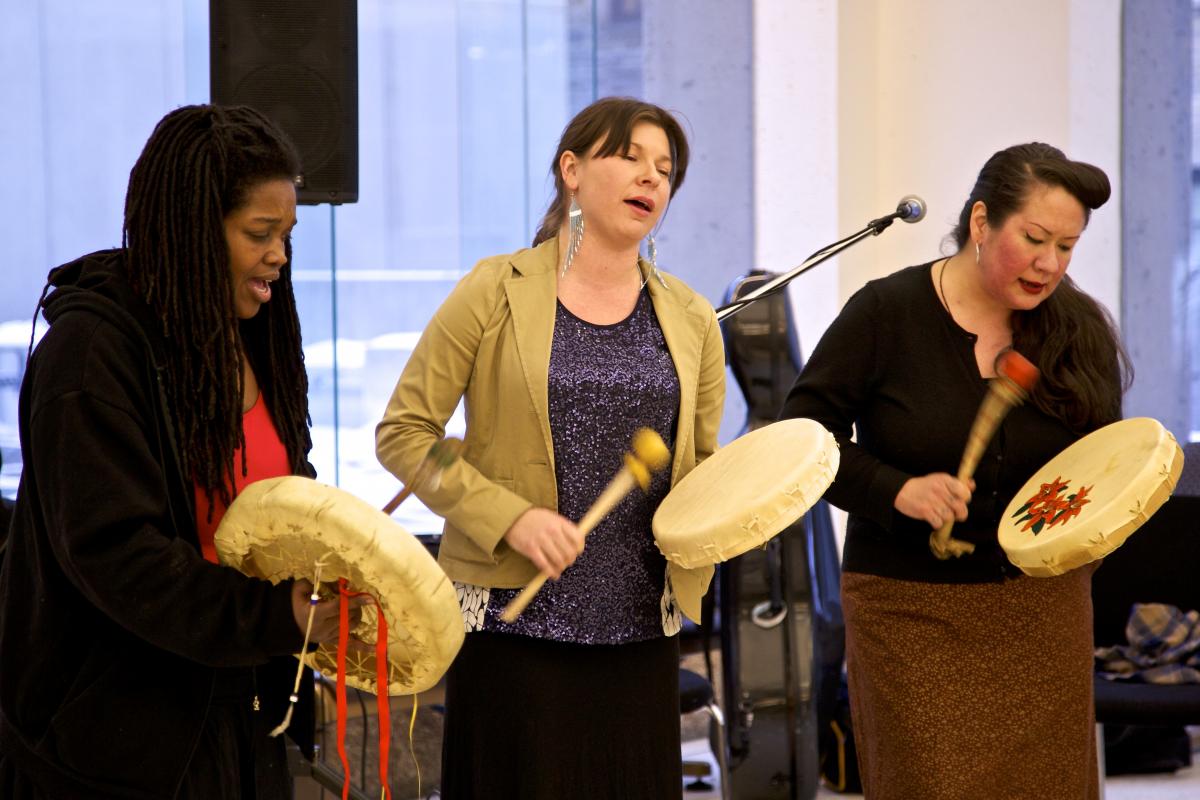
Q&A: Joshua Liu on Better Health Via Mobile Device After Surgery
Dr. Joshua Liu knows a good idea when he sees one. And, he has a knack for turning good ideas into practice. Liu is a co-founder and CEO of Seamless Mobile Health, which lets patients monitor their recovery after surgery with a mobile app — and get help when they need it.
The app helps patients avoid the demoralizing journey back to the hospital they just left. It could also greatly reduce health care costs: hospitals in Canada readmit more than 40,000 patients a year after surgery, costing more than $420 million.
Seamless won top prize at the 2013 Canadian e-Health apps challenge, and earlier this year Forbes named Liu one of its Top 30 Under 30 in science and health care. The company recently launched its app at Baylor College of Medicine in Texas, and will start a local rollout at Toronto East General Hospital this spring.
Liu, a recent graduate of the University of Toronto medical school, spoke with Faculty of Medicine writer Jim Oldfield about what mobile technology can do for medicine.
How does your technology improve health care?
Time is a big problem in hospitals. Surgeons and nurses are incredibly busy, and only have a few minutes to educate patients before they’re discharged home. As well, patients don’t always recall verbal instructions accurately, or when they get written instructions, they may lose them or not read them all. With our app, we engage patients to monitor for early warning signs after surgery, and automate instructions on what to do next in their recovery. We’ve found that patients respond better to active engagement, and to receiving bite-sized education — especially if it’s delivered right when they need it.
Other mobile health solutions provide a similar function. How is yours different?
Our platform gives patients immediate feedback, so they can self-manage smaller concerns, or know which medical professional to contact for help if their symptoms worsen. Other mobile health solutions require hospitals to monitor every patient’s data —our platform offers that option, but we also enable hospitals with fewer human resources to use smart algorithms that allow the app to give automated, real-time feedback. We also provide an analytics module that enables health care providers to assess quality metrics and measure how well they care for patients over time.
What would be the benefit of those analytics?
Right now, the patient experience after surgery is a black box — we have no idea what happens between the time they leave the hospital and their follow up visit with their surgeon several weeks later. By collecting data, our platform fills this gap and will pick up useful insights, opening a window on the patient journey toward recovery. Hospitals can use this data to do pretty advanced analytics, such as predict the likelihood of surgical complications. They can then make data-driven decisions to improve their quality of care.
Why did you choose the U.S. to begin the rollout of your technology?
The drivers for adopting technology in the U.S. are stronger. For example, beginning in October 2014, Obamacare will impose penalties on hospitals for certain surgical readmissions. Canadian health care funding models are moving towards value-based health care, but the move is not as aggressive. That said, we continue to find leaders, like Toronto East General Hospital, who want to pave the way for health care innovation.

Optimize this page for search engines by customizing the Meta Title and Meta Description fields.
Use the Google Search Result Preview Tool to test different content ideas.

Select a Meta Image to tell a social media platform what image to use when sharing.
If blank, different social platforms like LinkedIn will randomly select an image on the page to appear on shared posts.
Posts with images generally perform better on social media so it is worth selecting an engaging image.
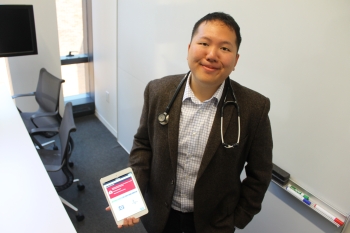
New Way to Treat a Deadly Childhood Cancer with Drugs Already on the Market
Receiving a diagnosis of ependymoma, the third most common type of childhood brain cancer, can be devastating. While babies and toddlers are treated with surgery and radiation therapy, current chemotherapy is ineffective and the cancer often recurs.
Remarkably, researchers from the University of Toronto’s Department of Laboratory Medicine and Pathobiology (LMP) have discovered a new way of treating this deadly form of cancer – with FDA approved drugs.
Dr. and co-authors including Dr. Peter Dirks, also a professor at LMP, published the groundbreaking findings in Nature February 19, 2014.
Their research showed that epigenetics, the packaging of DNA, is the main cause of this cancer rather than mutations in the DNA.
DNA code is comparable to a three-billion letter long set of instructions on how a cell should operate. In this analogy, the majority of cancers are caused by words that are misspelled, added or deleted or entire book chapters that are added or deleted.
However, according to Professor Taylor, “When we look at ependymoma, we don’t find any misspelled words, deleted or duplicated words or book chapters that are missing. Instead, what we find is that the entire novel is written in the wrong font and the DNA is packaged improperly. While epigenetics has been known to play a role in cancer, this is the first time that epigenetics is the prime driver of cancer.”
There are already FDA-approved drugs that can alter the cancer’s epigenetics.
“Usually when you make a discovery you have to make a new drug, but there are already drugs that change the font," said Taylor. "In this case, there are drugs that are the Microsoft Word equivalent of select all and switch to Times New Roman."
The team’s success relied heavily on their ability to grow and study cells from these rare tumours. Once a patient’s tumour is removed from the operating room, its cells are taken to Professor Dirks’s lab to be grown in specialized conditions. The process is so efficient that by the time a child has recovered from surgery, the team has tested the cells and will know whether a specific drug will work.
“I think that’s where this project has been so exciting. Dr. Taylor and Steve Mack made a foundational discovery in this tumour, and we were able to bring our expertise together in growing these live cells to see whether targeting this packaging really had any promise,” said Dirks.
The team is optimistic that this will provide hope for children suffering from ependymoma. Taylor explains, “We hope it will be an effective treatment. One drug doesn’t usually result in a cure, but there are multiple drugs that attack the same mechanism. Even if we can’t cure it, we could use the drug to keep it to a treatable disease like diabetes.”
If the group receives funding, it could take only three to five years to complete a clinical trial.

Optimize this page for search engines by customizing the Meta Title and Meta Description fields.
Use the Google Search Result Preview Tool to test different content ideas.

Select a Meta Image to tell a social media platform what image to use when sharing.
If blank, different social platforms like LinkedIn will randomly select an image on the page to appear on shared posts.
Posts with images generally perform better on social media so it is worth selecting an engaging image.
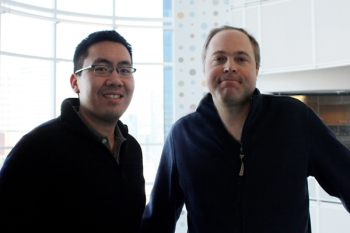
Lauded: U of T Neuroscientist Wins Dan David Prize
University of Toronto Professor Peter St George-Hyslop is a laureate of the 2014 international Dan David prize, for his pioneering research on Alzheimer’s disease. St George-Hyslop and his team found two genes responsible for the early onset of Alzheimer’s, which has made early diagnoses and treatment of the disease possible.
The annual Dan David Prize honours achievements in the three time dimensions: past, present and future. St George-Hyslop shares this year’s “present” prize — themed “combatting memory loss” — with two other neuroscientists, Professor John Hardy of University College London and Professor Brenda Milner of McGill University.
“This award is a great honour, and a recognition of the many outstanding researchers with whom I’ve had the privilege to collaborate,” said St George-Hyslop, Director of the Tanz Centre for Research in Neurodegenerative Diseases at U of T. “Today, we have a much deeper understanding of the molecular basis of neurodegenerative diseases than we did a generation ago, and this new knowledge has enabled many promising lines of investigation into better diagnoses and treatments.”
St George-Hyslop, who is also the Wellcome Trust Principal Research Fellow at the Department of Clinical Neurosciences at the University of Cambridge, was the first to discover key mutations in proteins involved in the early onset of Alzheimer’s. Scientists believe these proteins also play a role in the late onset of the disease.
St George-Hyslop’s lab is now pursuing new therapies based on the molecular mechanisms of Alzheimer’s, which they hope will limit symptoms of the disease, which include memory loss, cognitive decline and behavior changes.
“Dementia and other neurodegenerative disorders present highly complex scientific and clinical challenges,” said Professor Catharine Whiteside, Dean of the Faculty of Medicine at U of T. “But the passion and ingenuity of researchers like Peter St George-Hyslop is turning the tide on these diseases, and will continue to provide more and better treatment options for patients around the world. We are thrilled that the Dan David Foundation has recognized Peter’s extraordinary contributions to brain science.”
The Dan David prize is headquartered at Tel Aviv University, and named after the late businessman and philanthropist Dan David. Winners of the prize donate 10 per cent of their award money to 20 doctoral and postdoctoral scholarships.

Optimize this page for search engines by customizing the Meta Title and Meta Description fields.
Use the Google Search Result Preview Tool to test different content ideas.

Select a Meta Image to tell a social media platform what image to use when sharing.
If blank, different social platforms like LinkedIn will randomly select an image on the page to appear on shared posts.
Posts with images generally perform better on social media so it is worth selecting an engaging image.
